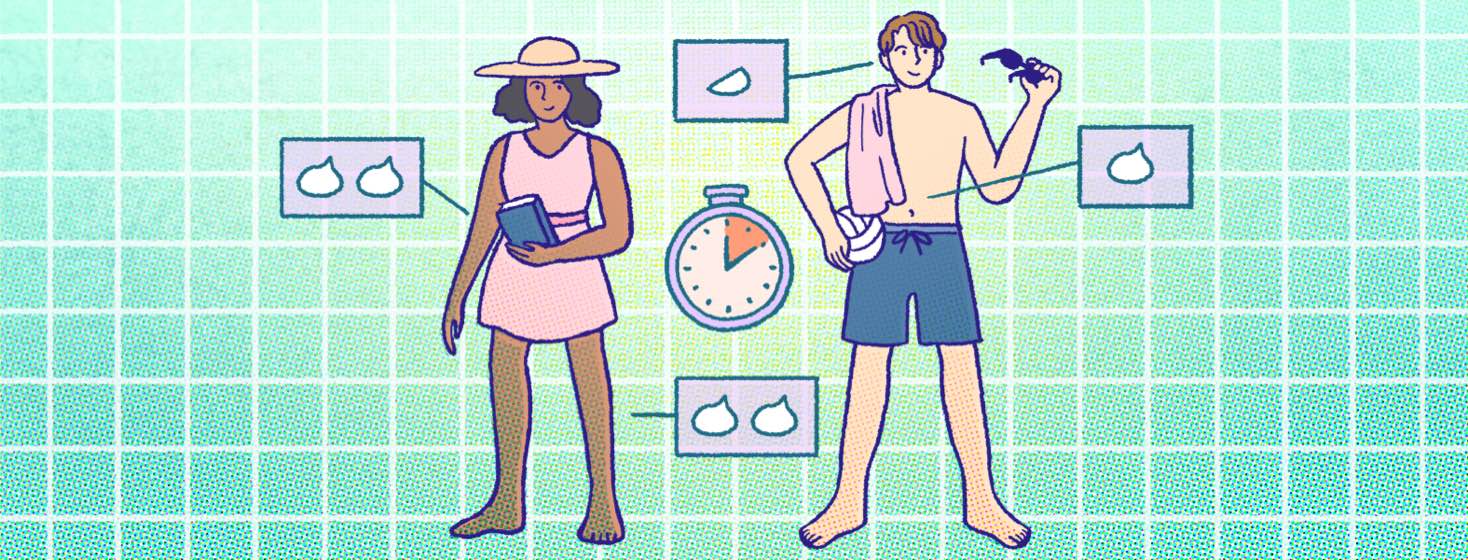How Much Sunscreen Is Appropriate for the Face and Body?
While we are all aware of the numerous benefits of using sunscreen daily, we typically don’t apply enough sunscreen.
Research has shown that nearly 50% of sunscreen users use less than half of the recommended amount of sunscreen. It is for this reason that unwanted tanning and sunburns occur even in people who apply sunscreen on a daily basis.
How much sunscreen should we use?
So, how much sunscreen should we apply to achieve the desired results with respect to sun protection? Experts suggest that to achieve the level of sun protection as per the Sun Protection Factor (SPF), mentioned on sunscreen labels, around 2 milligrams of sunscreen per square centimeter of the skin should be used. This means applying two tablespoons (equivalent to a full shot glass) of sunscreen to the exposed areas of the face and body. If you are using a sunscreen spray, you should apply it until you get an even shine on the skin.
Does it matter where I'm applying it?
As far as the different body parts that usually remain exposed to the sun when we are outdoors, dermatologists recommend using a minimum of six teaspoons of sunscreen, including two for the legs and one for the chest and stomach. Below are some further guidelines on what amount of sunscreen is appropriate for the face and other body parts.
Face and neck
Half a teaspoon of sunscreen is what should be used to protect your face and neck from UV damage. Make sure you cover the whole face, without missing the tip of your nose and the eyelids. Many people believe that sun damage only happens on bright sunny days. However, the fact is that sunburns can occur on a cloudy day too. So, you should always take necessary protection, regardless of the weather outside.
Arms
Your arms require only a single teaspoon of sunscreen. Make sure that you cover the back of your arms as well as creases (if any). Statistics show that most people only apply it once a day. Don’t forget to reapply every 2 hours when outdoors, and as soon as you start sweating or after swimming.
Back of the torso
Apply one tablespoon of sunscreen on your back and shoulders, particularly when you know that these body parts will remain exposed to the sun once you head outside. Many people struggle to apply sunscreen to these areas, so consider taking help from a friend or a family member.
Front of the torso
Even when you are not sunbathing and you are just walking around, this part of your body could remain exposed to the sun. So, make sure to cover your chest and the belly area with one teaspoon of your favorite sunscreen.
Legs
The legs need maximum coverage – one teaspoon for each leg. Make sure to cover the tops of your legs as well, particularly if they are going to be exposed to the sun. Dermatologists say that we should apply sunscreen before going out and wait for at least 30 minutes, prior to getting in the water or going out in the sun.
In addition to applying the recommended amount of sunscreen, sunscreen must be reapplied every 2 hours, and even more frequently after heavy perspiration, swimming, or toweling off. Irrespective of the quantity of sunscreen you apply, the SPF of your sunscreen should be 30 or above for adequate sun protection. It is also crucial to use broad-spectrum sunscreens as they offer protection against both UVA and UVB ultraviolet rays.1
Choose what works best for you
Thankfully, many new sunscreen formulations, including sticks, clear gels, sprays, and powders are now available on the market. This gives you more choices and you can pick the one that you find easy to apply or that works best for you. However, when it comes to safeguarding the skin against sun damage completely, wearing UV-protective clothing, broad-brimmed hat, and UV-blocking sunglasses are also very important components.1

Join the conversation